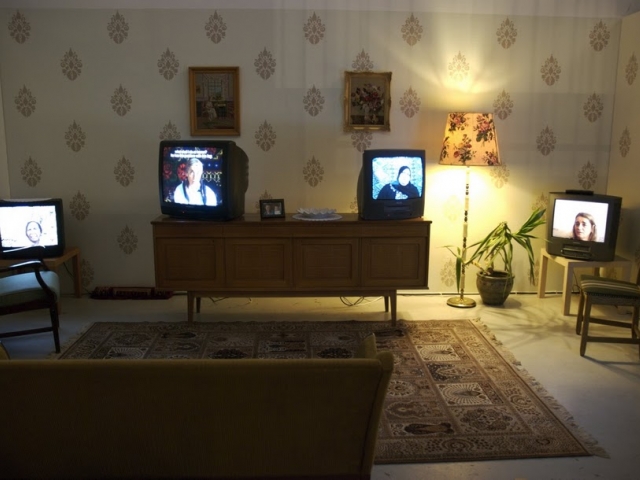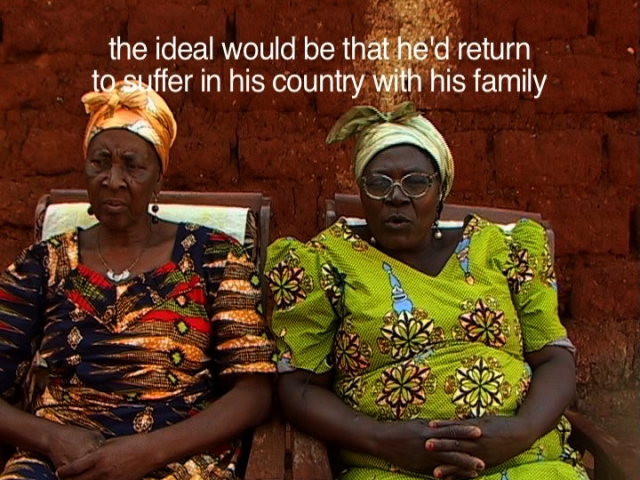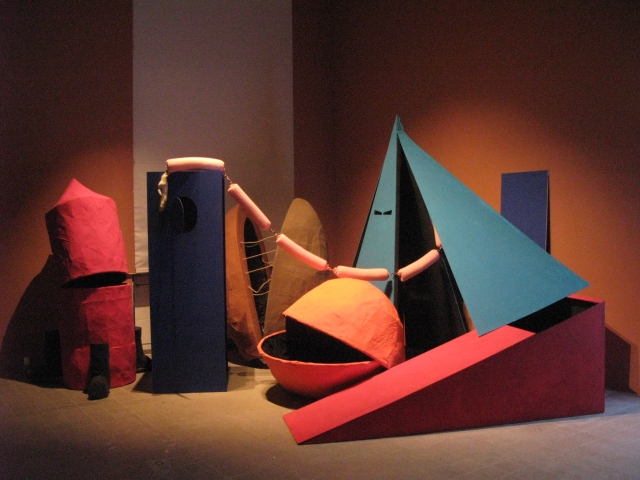Towards the Other
The international art project Towards the Other offers the audience a wide range of perspectives on migration, which has become an essential part of Russian and European reality. The society today has been severely influenced by asthetics of global migration and the cultural of any big city in the world represents a colorful combination of traditions, habits, rituals, cuisines and languages. Hence, reflecting on migration processes not only in sociological but also in aesthetical terms has become very important for contemporary art in Europe, which has also significantly changed because of migrants.
The international project Towards the Other consists of the exhibition of video art and a collateral program of lectures by artists, curators and researchers of migration.
Two series of video works Migratory Stories and Nothing is Missing by the Dutch artist Mieke Bal and the film Museum Songspiel. The Netherlands 20XX by the Russian art group Сhto delat? are presented at the exhibition. Migratory Stories is a collection of 13 videos about migrants from various countries made by Mieke Bal individually, or in cooperation with other authors. Migratory Stories looks at the changes in the countries of arrival, the difficulties their inhabitants unwittingly erect where the old value of hospitality vies with jealously guarded privileges. Economic, administrative, cultural, and linguistic forms of boundary-policing are shown through the eyes of those who are kept at the other side. Nothing is Missing consists of 8 stories told by mothers about their children who left their homes and family for good to go to other counties in pursuit of a better life. Nothing is Missing invites visitors into a living room where video portraits of mothers tell us about the child who left. The emptiness in the home of origin is thus brought into the homey atmosphere where we all stock up for life. Visitors are invited to sit in armchairs or on sofas. Around them women speak to someone else. The interlocutors are people close to them, intimates, but the relationship with whom has been interrupted due to the migration of the women’s children: a grand-child she didn’t see grow up; a child-in-law she didn’t choose or approve of; the emigrated child; in one case, three generations. The intimacy, but sometimes a slight uneasiness, is characteristic of the situation. It enables visitors to be witnesses to what migration leaves behind; this is rarely represented and yet, it is at the heart of the social fabric of the societies of departure. For the exhibition in St. Petersburg Mieke produced two new videos with Russian women.
Another point of view on migratory culture and the accepting the other in particular, is represented in the video by the platform “Chto delat?”. In their work Museum Songspiel. The Netherlands 20XX “Chto delat?” suggests an alternative view on migration, which is quite typical for the society today. They also use another angle and tell their story in the perspective of an attitude on the part of the society toward migrants as the representatives of another culture. In their carefully directed performance they create an artificial, fictional story, in which a group of migrants seeks asylum in a museum of contemporary art in order to avoid deportation. The viewer witnesses various representatives of the western society (museum director and curator, visitors, government representatives and media) reacting to the circumstances caused by unexpected appearance of migrants who happen to be totally incongruous in a museum. Even though the title of the work indicates that the story takes place in the Netherlands, the geographical aspect is rather conventional because the focus of the work is in reality any society facing large–scale flows of migrants, including Russia.
Exhibition dates: October 10-30, 2011 Exhibition venue: Peter and Paul Fortress, Nevsky curtain wall, right side
The exhibition of video art is accompanied by a large collateral program of public lectures by Mieke Bal, Chto Delat?, and Dutch and Russian sociologists, anthropologists and theorists who touch upon migration issues in their studies and research. The collateral program opens up with a dicsussion about contemporary migratory culture and its representation in art and will be held between artists, curators, art historians and sociologists. The program also inludes four lectures on identity, everyday life of a migrant, migratory aesthetics in arts, and the meaning of the term 'nomad' in contemporary social sciences.
The parallel program is held at different city venues from October 11 to October 26, 2011. The Project is organized by Creative Association of Curators TOK and the Netherlands Institute in St. Petersburg.
The project is supported by Philips ProMU State Museum of History of St. Petersburg Center for Independent Social Research European University at ST. Petersburg





